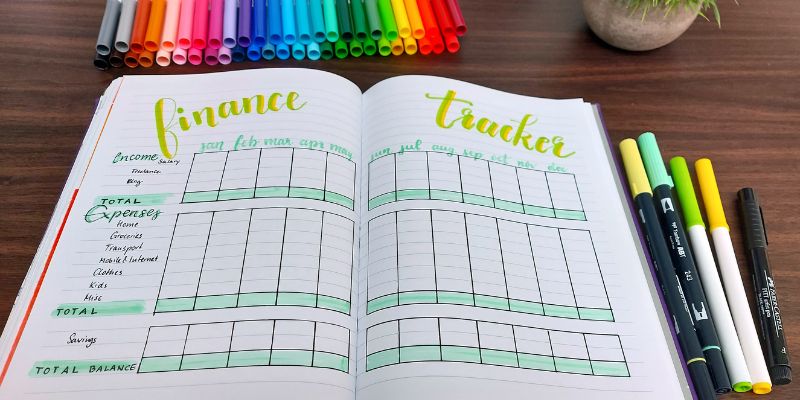Mastering the art of budgeting is essential to building financial stability and living a fulfilling life. Understanding and implementing effective budgeting strategies can pave the way to achieving your goals. In this comprehensive guide, we’ll explore the 8 steps of the budgeting process, equipping you with the knowledge and tools to take control of your finances and build a secure future. With actionable insights and real-life examples, you’ll gain the confidence to make informed financial decisions and navigate any challenges that arise along the way.

Note: Consider consulting a certified financial planner or advisor for more personalized financial advice tailored to your unique situation.
The Power of Budgeting
Budgeting isn’t just about restricting spending; it’s a powerful tool that empowers you to make informed decisions, prioritize your financial goals, and live a life of abundance within your means. By following a structured budgeting process, you can gain clarity on your income, expenses, and savings, ultimately leading to financial freedom and peace of mind.
Understanding the 8 Steps of Budgeting Process
Step 1: Set Financial Goals
Defining your financial goals is crucial before diving into the nitty-gritty of budgeting. Whether you’re saving for a dream vacation, buying a home, or building an emergency fund, clearly articulated goals provide direction and motivation for your budgeting journey. Take some time to reflect on your aspirations and establish both short-term and long-term objectives.
![]()
Example
Your goal could be to save $417 per month for the next two years to start your emergency fund of $10,000.
Step 2: Gather Financial Information
You need to understand your current financial situation to create an accurate budget. Gather information about your income, including wages, freelance earnings, investment returns, and any other sources of revenue. Additionally, compile data on your expenses, such as rent or mortgage payments, utilities, groceries, transportation, debt repayments, and discretionary spending.
Step 3: Track Your Spending
Tracking your spending is the cornerstone of effective budgeting. By recording every expenditure, no matter how small, you can identify patterns, pinpoint areas where you’re overspending, and make necessary adjustments. Consider using budgeting apps or spreadsheets to streamline the process and gain insights into your financial habits.
![]()
Tip
I use online budgeting software called Wave Apps to categorize my expenses, which helps me visualize where my money goes each month.
Step 4: Create a Budget
With your financial goals and a clear picture of your income and expenses, it’s time to create a budget that aligns with your priorities. Allocate funds to essential categories such as housing, utilities, groceries, transportation, debt repayment, savings, and discretionary spending. Aim to balance covering necessities and saving for the future while allowing room for enjoyment and occasional splurges.
Tip
Discover different budget strategies, such as the 50/30/20 method, the zero-based budget, the pay-yourself-first budget, and more, here.
Step 5: Analyze and Adjust
Budgeting is not a set-it-and-forget-it process; it requires ongoing monitoring and adjustment. Regularly review your budget to assess your progress toward your financial goals and identify areas where you can cut back or reallocate funds. Be flexible and willing to adapt your budget as circumstances change or unexpected expenses arise.
Tip
When you realize you are overspending on a specific category, don’t panic. Brainstorm ways of reducing the expenses in that category and start implementing them step-by-step. Remember, changing your spending habits is as easy or difficult as working out. Getting used to the new routine takes time, and you might slip up occasionally. Take small, achievable steps and keep at it.
Step 6: Build an Emergency Fund
Life is full of surprises, and having an emergency fund can provide a financial safety net when the unexpected occurs. Aim to save at least three to six months’ worth of living expenses in a readily accessible account. This fund can cover unforeseen expenses such as medical emergencies, car repairs, or job loss, allowing you to weather financial storms confidently.
Tip
Talk with your bank or financial advisor to set up a high-yield savings account and automatic monthly contributions to gradually build your emergency fund. You can use one of these printable savings trackers to visualize your progress.
Step 7: Pay Off Debt
Debt can weigh heavily on your financial, emotional and physical health and limit your ability to achieve other goals. Prioritize paying off high-interest debt such as credit card balances or personal loans as quickly as possible. Consider implementing debt repayment strategies such as the debt snowball or debt avalanche method to accelerate your progress and become debt-free sooner.
Tip
Automate, automate, automate. Since you know your monthly expenses, you might have a better understanding and ideas of where to save money. Allocate a monthly amount towards repaying your debt and set it on autopilot. Your bank or financial advisor can help with this.
Step 8: Review and Repeat
As you progress on your budgeting journey, it’s essential to regularly review your financial goals, budget, and spending habits to ensure you’re on track to success. Celebrate your achievements, learn from setbacks, and stay committed to your long-term financial well-being. Remember, budgeting is a lifelong skill that evolves with your circumstances and aspirations.
Tip
In your calendar, set aside time, either weekly, bi-weekly, or monthly, to track and review your budget. Thirty minutes to one hour should be enough to keep you on track. Reviewing your progress and discovering patterns or challenges will keep you motivated toward your financial goals.
Empower Your Financial Future
Mastering the budgeting process is not only about managing your money; it’s about taking control of your future and creating the life you desire. By following these eight steps and incorporating them into your daily routine, you can cultivate healthy financial habits, achieve your goals, and experience true financial freedom. Remember, the journey to financial success begins with a single step – take the first step today and embark on your path to a brighter tomorrow.
Additional Resources:
- Budgeting Apps: Explore top-rated budgeting apps to streamline your financial management, such as Wave App, YNAB, and Pocketguard.
- Debt Repayment Strategies: Learn more about effective strategies for paying off debt and achieving financial freedom.
- Emergency Fund Essentials: Discover tips for building and maintaining an emergency fund to protect financial stability.
Invest in your financial future today and reap the rewards tomorrow. Happy budgeting!





